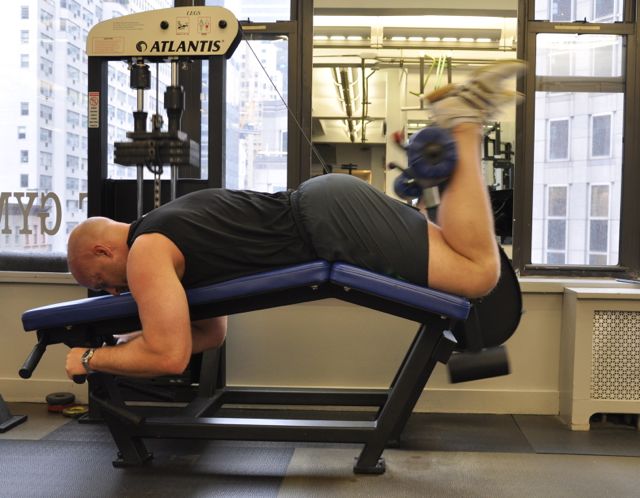Are Leg Curls a Worthwhile Hamstring Exercise?
A while ago, a client of mine asked about the reason for leg curls in his program. He’d been doing some of his own research, and come up with an article about deadlifting as a superior methodology for strengthening the hamstrings. From the article, authored by Eric Cressey:
Strengthening the posterior chain with closed chain movements like deadlifts also reduces the risk of injury. Weak hamstrings are a serious risk factor for anterior cruciate ligament (ACL) injuries, patellofemoral pain, and a host of other problems in the knee, hip, ankle, and lower back. Conversely, leg curls simply won’t get the job done because they don’t require co-contraction of the glutes and hamstrings. They’re open chain and occur in a fixed line of motion…

Deadlifts vs Leg Curls – Which is Best?
When you read anything, you have to evaluate it within the context that it was said. Typically, the population that will read that type of content is not interested in reading about general preparation.
General preparation can be tedious, especially when compared to the glamour associated with hefting 800 lbs off the floor while blood shoots from your nose. However, it’s a necessary part of training. While there is some truth in the quote, the article addresses one part of training, without looking at the whole picture.
It is true that training the hamstrings with hip extension work and closed chain movements like the deadlift prevents injury… in some cases. It is also accurate that strong hamstrings help to prevent knee injuries, and that deadlifting is a superior exercise for training the posterior chain. However, to say that leg curls are an ineffective means of developing the hamstrings is inaccurate. There is no one best exercise in the world, just like there is no one best training program, except perhaps the one you have not done.
Continue reading to learn about the anatomy and function of the hamstrings.
Page 1 of 4




